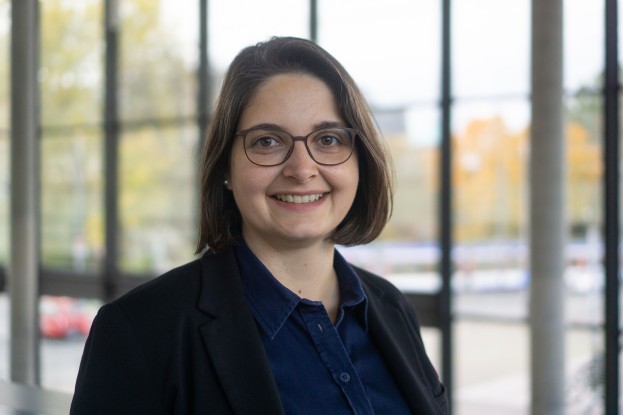Numerical solution of a kinetic transport equation using the Method of Characteristics
This project aims at students with a strong interest in and a basic background of numerical methods for ordinary differential equations (ODEs). These methods shall be applied to solve a linear first-order partial differential equation (PDE) using the Method of Characteristics. The students should like to develop, implement, and explore novel numerical schemes in the context of the simulation of a recent model of biological cell migration in fibrous environments, for example body tissues.
The cell migration model as derived in the recent publication by Zhigun & Surulescu [1] leads to a kinetic transport equation for the cell density depending on time, space, and velocity, Eq. (3.52). This equation can be recast as a scalar linear first-order PDE, which in turn can be solved using the Method of Characteristics. We can consider the tissue, in which the cells migrate, in d-dimensional space for d=1, 2, or 3. The resulting first-order PDE depends then on 1+2d variables, respectively. We develop and test the technique first for d=1, then go to d=2, where we can already simulate problems of practical interest. Time permitting, we can also consider the fully three-dimensional case.
In this project you will derive the characteristic ODE system for the linear first-order PDE. You will subsequently use an appropriate numerical ODE solver to approximate the solution of the characteristic ODE system and that way obtain approximations of the kinetic transport equation. We will then look at ways to control and reduce the numerical errors in this scheme.
Having a well-implemented numerical scheme for the kinetic transport equation at hand, we can conduct further numerical experiments to investigate cell migration in fibrous environments.
Results arising from the investigations outlined above are of current research interest and thus publishable.
Additional Information
| Supervisor |
Prof. Dr. Jan Giesselmann, Dr. Alf Gerisch |
| Availability | Spring and Fall 2025 |
| Capacity | 3 Students |
| Credits | 12 – 18 ECTS |
| Remote Option | No |



